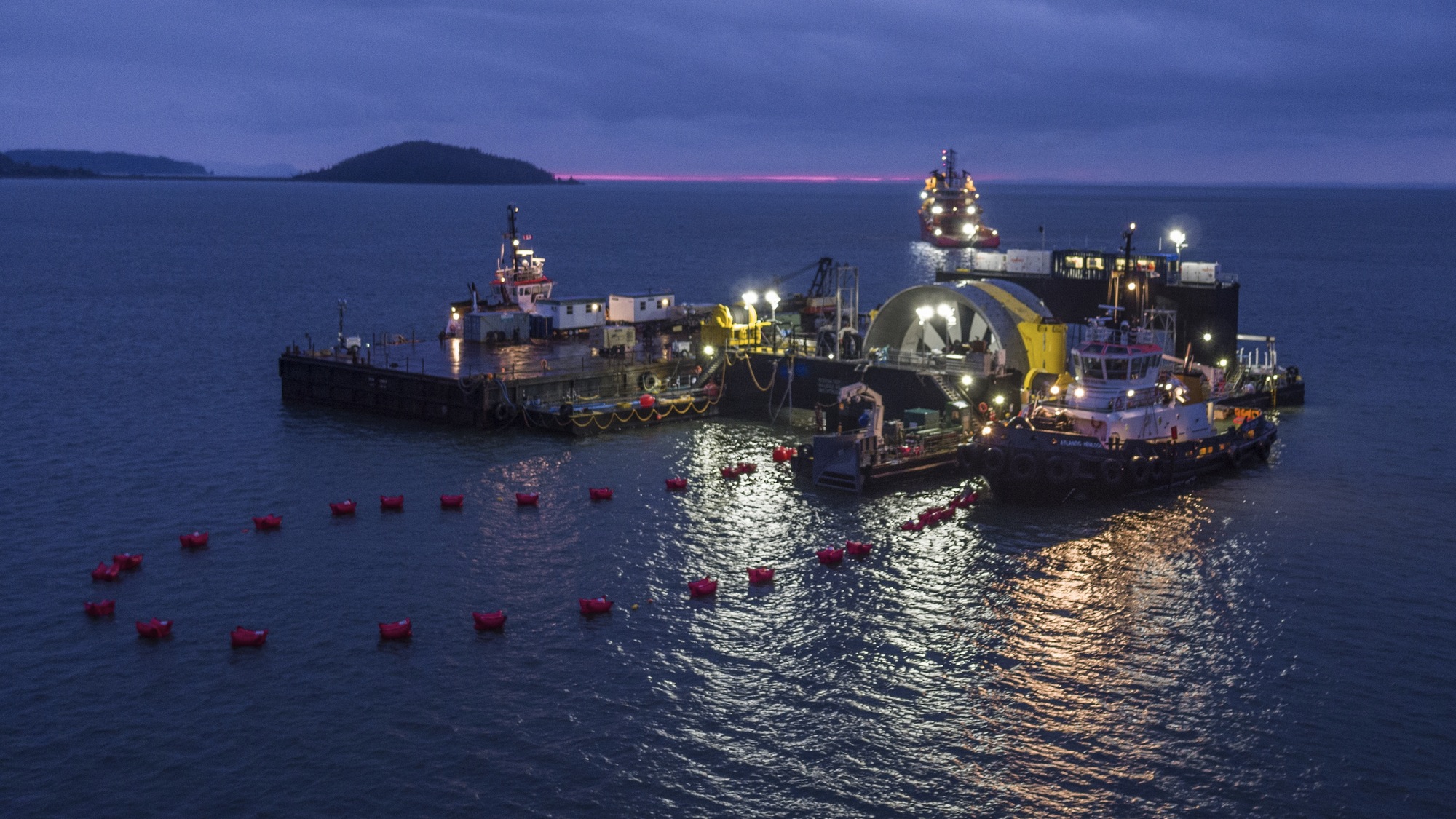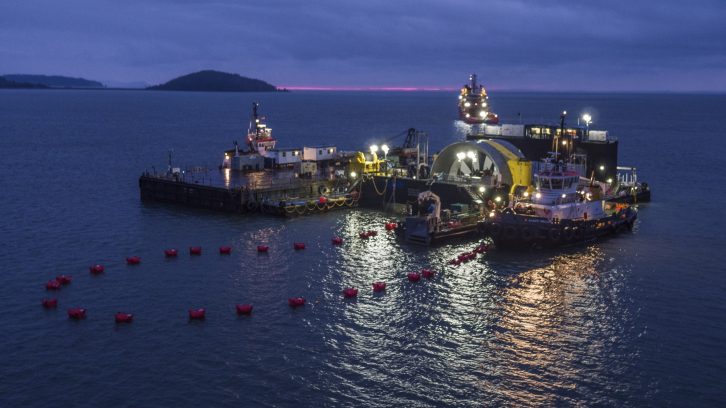Innovation
2017 could be big year for renewable energy in Nova Scotia
Several companies aim to put tidal turbines into the Bay of Fundy

caption
The first Cape Sharp Tidal turbine, visible in the centre, prior to its installation.
caption
The first Cape Sharp Tidal turbine, visible in the centre, prior to its installation.The answer to providing clean energy to the Maritimes might be washing up on the shores of the Minas Passage. North America’s first in-stream tidal turbine has been providing energy to Nova Scotia homes for two months now.
In-stream tidal turbines function similarly to wind turbines, but underwater, where the tides flow most. These types of turbines have been talked about in the Bay of Fundy for decades, but only now are gaining traction.
New projects hope to offer a more environmentally friendly alternative to the barrage tidal station in Annapolis Royal. This dam-style station has received notable criticism for sucking marine life through it, including at least one humpback whale.
The Fundy Ocean Research Centre for Energy (FORCE) calls itself “Canada’s leading research centre for in-stream tidal energy.” The research centre has installed the infrastructure to house four turbine pilot projects and connect them to the Nova Scotia power grid. They also work with researchers and conduct environmental monitoring of the projects.
Matt Lumley, communications director at FORCE, says similar technologies are being used in other parts of the world, and after ten years of data collection from those projects, the results are looking good.
“There hasn’t been a single collision with any fish or marine mammal in a turbine in an ocean environment to date,” says Lumley.
Although the findings elsewhere are encouraging, it’s still important to get data from Nova Scotia directly, Lumley adds.
“The most important questions you can’t answer without a turbine in the water, so this is when we’re going to get our really good information,” he says.
To date, four companies have had the opportunity to test their turbines at the FORCE site. The very first of these, built by Cape Sharp Tidal, went into the water in November 2016 and is currently powering approximately 500 homes and businesses.
Cape Sharp is already planning to connect a second, identical turbine with their first one – doubling the amount of power they can provide. Sarah Dawson, a spokesperson for Cape Sharp Tidal, says “we don’t have a firm timeline at the moment but we are planning for 2017.”
Cape Sharp isn’t the only one. At least two of the other companies working at the research centre in the Minas Basin are shooting for 2017 to be the year they get in the water.
Minas Energy is a partner in one of those companies. Energy project co-ordinator, Kris MacLellan, hopes to have their turbines in the Minas Passage by the second half of 2017 — “if everything goes right.”

caption
An artist rendering of the Minas Tidal design. Unlike the Cape Sharp turbine, which has already been deployed underwater, the Minas Tidal array will feature several turbines and be semi-submersible, which means it will be accessible from the surface for maintenance checks.The FORCE site isn’t the only promise for clean in-stream tidal energy. Recently three smaller projects in Digby Neck, Grand Passage and Petit Passage have been announced by Spray Tidal, who work with Minas Energy.
MacLellan hopes these smaller turbines can offer an alternative to the heavy reliance on diesel fuel in areas such as the Canadian Arctic or northern British Columbia.
If Minas Energy and their partners, says MacLellan, can “demonstrate the efficacy of smaller scale or medium scale turbines, then there’s a whole other very different type of revolution that could await us.”
So, is 2017 the year of tidal energy in Nova Scotia?
“Even if there is slippage, I think we’ve hit kind of a critical mass that can’t be turned back,” says MacLellan. “The government has made it clear that this is a priority for them and for environmental reasons here in Nova Scotia; it fits our profile very well.”
